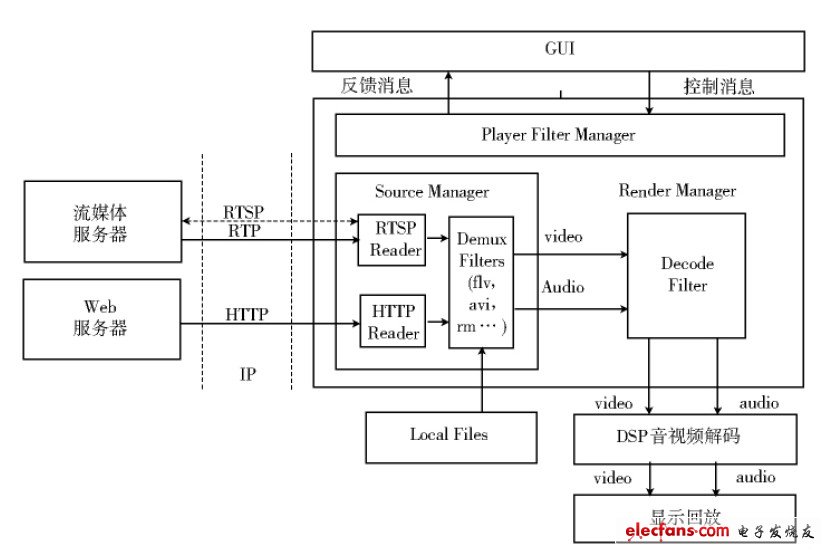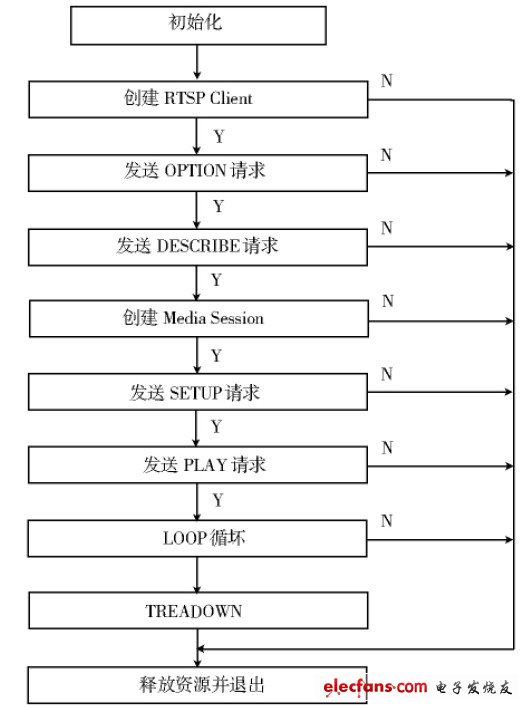Abstract: This system selects TQ2440 development board as the hardware platform, adopts embedded Linux operating system to give the specific software and hardware solution of streaming media player system, and designs a set-top box media player based on embedded Linux. It has completed its implementation with the network interface, and provides support for mainstream MPEG-2, MPEG-4, H.264 and other formats through the parsing of TS streams. The system is portable and scalable to meet changing market demands.
1 Introduction
The rapid development of computer multimedia technology and network technology has enabled streaming media-based multimedia applications to be used in many fields, especially in the fields of network video telephony, remote monitoring, and video on demand. With the maturity of computer multimedia compression technology and the development of network transmission technology, the development of real-time reliable, multi-functional, digital, simple operation networked streaming media player based on computer network communication technology and multimedia applications has become computer, communication, consumer electronics. One of the main directions of technology development in the product field (3C industry - Computer, CommunicaTIon, Consumer Electronics).
2 system hardware design
This article uses the TQ2440 development board as a hardware platform.
The S3C2440AL is the control core and is responsible for controlling all auxiliary devices. The memory adopts two types of SDRAM and Flash, which can meet the needs of system operation and debugging. The basic port includes an Ethernet interface, a USB interface, and two RS232 serial ports. The A/D and D/A modules are primarily used for field data acquisition and control signal output. The DC/DC module is primarily responsible for powering the entire system.
The S3C 2440AL is an ARM9 core CPU based on a reduced instruction set designed and developed by Samsung. It can operate at 400MHz and has a wealth of internal devices, including: memory management unit MMU, 16kB instruction buffer and 16kB data buffer. , memory controller (SDRAM controller), NANDFlash and NOR Flash controller, 4-channel external DMA request control, 3 serial ports, SD memory card read interface, USB host, USB device, 5 pulse width modulation timing Device. At present, S3C2440AL has been widely used in PDA, smart phone, digital multimedia and so on.
3 system software design
The software components of the system include: embedded Linux operating system, device drivers, graphical interface and browser programs, which are just a key part of the IPTV set-top box software.
3.1 Embedded operating system selection and transplantation
This system uses Linux as the operating system, and uses the Linux2.6 kernel to be transplanted on the embedded microprocessor S3C2410. The specific transplantation method is as follows:
(1) Prepare the necessary files for the Linux2.6 kernel porting (kernel compression package linux-2.6.tar.bz2 and cross compiler arm -linuxgcc-3.4.1.tar.bz2). These files can be downloaded free of charge from the official Linux website. .
(2) Install the cross compiler arm-linux-gcc-3.4.1 using Linux commands (mkdir, tar, mv and export).
(3) Modify the Makefile and related hardware files. Since the compilation of the kernel is based on the instructions of the Makefile, the Makefile is used to organize the relationships between the various modules of the kernel, recording the interconnections and dependencies between the modules. Therefore, the developer must first modify the Makfile file in the Linux2.6 root directory. The main content of the modification is the type of the target code and a compiler for the compiled kernel.
(4) Use the Make command to compile the kernel to generate the kernel image file zImage file, and then solidify the file into the corresponding memory of the system through the corresponding firmware, and complete the transplantation of the Linux2.6 kernel on the ARM microprocessor.
3.2 The overall structure of the media player
System implementation principle: Under the control of the embedded microprocessor S3C2440AL, the TQ2440 development board receives audio and video broadcast information from the content service provider through the network interface, and then runs the graphical interface program to obtain audio and video information, and generates audio and video on this basis. The program list, the signal is transmitted to the display for display, and the program is presented to the user. The user uses the graphical interface provided by the display system and the browser to control and watch the program using the keyboard and mouse. The overall architecture is shown in Figure 1.

Figure 1 Overall architecture of the media player
3.2.1 Implementation of media player and network interface
The biggest feature of the media player when playing multimedia files on the network is the "streaming" feature that plays while downloading. In IPTV applications, because the streaming nature of multimedia data requires information interaction between the media player and the media server, they must adhere to an interactive protocol standard. The system player uses the RTSP protocol to establish and manage an RTSP session with the server, and receives media data from the network through a network transmission protocol. The media player data receiving process is shown in Figure 2.

Figure 2 Media player data receiving process
E Scooter Battery,Customized Lithium Battery,24V 20Ah For E Bike,Ebike And Escooter Battery
Changxing Deli Technology Co., Ltd. , https://www.delipowers.com